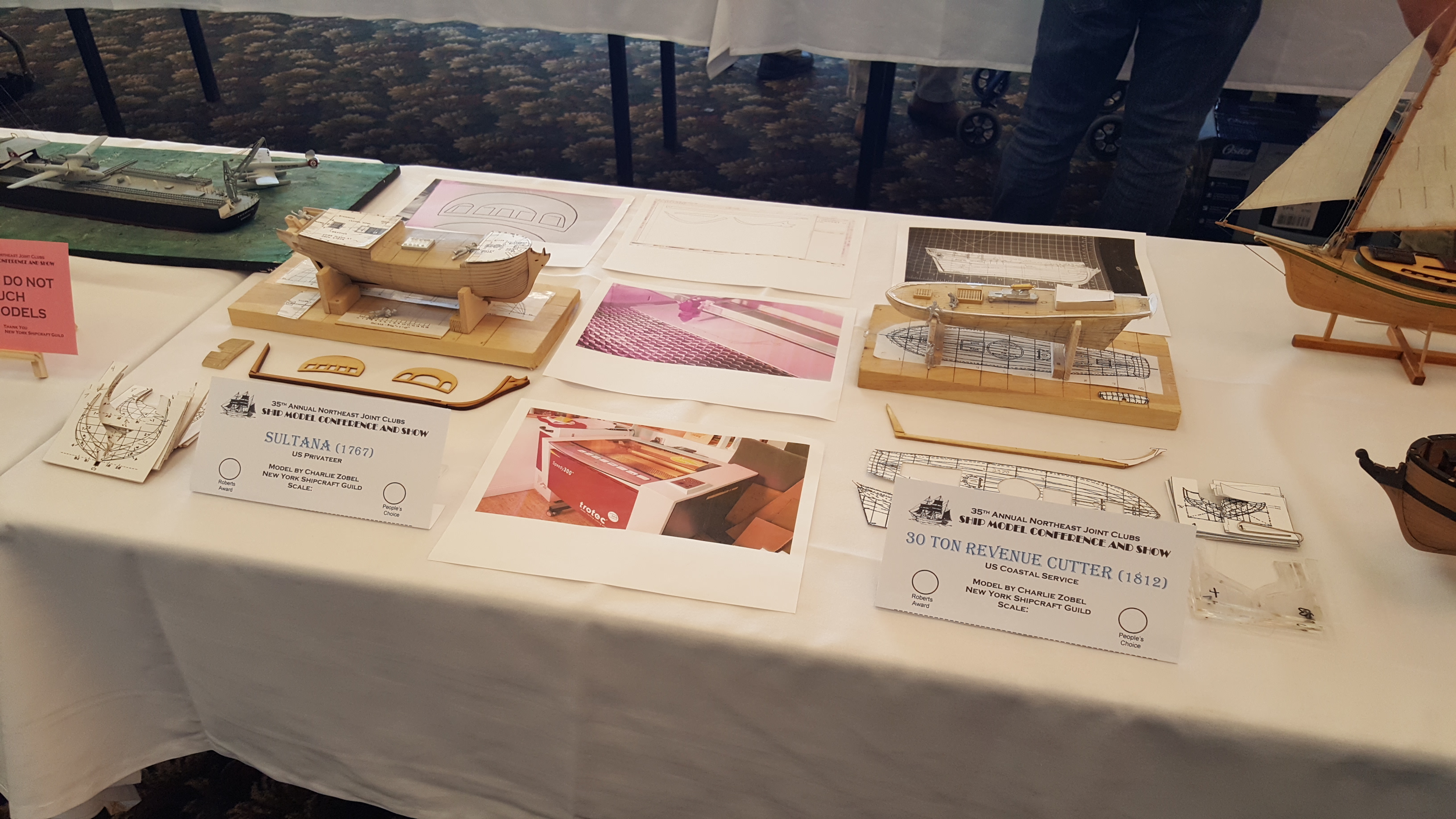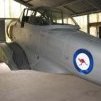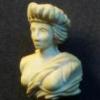MORE HANDBOOKS ARE ON THEIR WAY! We will let you know when they get here.
×
-
Posts
969 -
Joined
-
Last visited
Reputation Activity
-
 CharlieZardoz got a reaction from PeteB in 19th Century 31-ton Revenue Cutter by CharlieZardoz - Scale 1/64 - building as USRC Active based off Doughty plans and BlueJacket Shipcrafters kit
CharlieZardoz got a reaction from PeteB in 19th Century 31-ton Revenue Cutter by CharlieZardoz - Scale 1/64 - building as USRC Active based off Doughty plans and BlueJacket Shipcrafters kit
Hey guys! Well I did a bit more research to try and understand the nature of the planking of this type of ship and from what I see the model kits follow the graduated method. I spoke with Cathead regarding his Corel Ranger build and said the planks came in 3-4mm strips while Dallas has 5mm strips. But it's more than that he also said that the planks closest to the wales are thinner 3mm while the ones closer to the keel are 4mm. Look at the collage I posted of Dirk's gorgeous model and you can see how he laid out the planks (the scarfs were later covered by the wale) with thinner planks towards the deck. That said I feel that the krick model overdoes it with the thinness of planks they would probably be like 5" wide in real life. Look at the image of the cutter I posted and added 1/8" notches where planking would go. They seem a bit too big (these would be 8" planks in real life), so I think for this model having the average plank size of 7" (7/64") should be sufficient with the larger two models increasing to 1/8" (8" planks) and then 9/64" (9" planks) all having a few larger and smaller planks where needed. The decks will all be 9/64" no change there. That's the plan anyways well see what happens
So here is what I am going to do. I already have a stash of veneer cherry at 1/8" on hand which will be used for the widest planks in the center and towards the stern, then Ill order a bunch that are 7/64" in for the main planking and last a few at 3/32" for those closest to the deck curve. See Allan you are of course correct the answer is spilling. It's always spilling and in the future when I have a Byrnes table saw of my own I will no doubt work using that method but for now with these simple models I think having a couple of plank sizes and then curving/tapering the larger ones to fit is a stepping stone to spilling for me. I also plan on doing this for Sultana and this model(s) is already helping me understand how they will interrelate. It's having an inventory of plank sizes and using what is needed which in turn makes the idea of eventually milling my own very appealing! The idea of doing this on some major model like Confederacy seems like a distant dream at this point, I think I've developed a bit of planking phobia lol
-
 CharlieZardoz got a reaction from FriedClams in 19th Century 31-ton Revenue Cutter by CharlieZardoz - Scale 1/64 - building as USRC Active based off Doughty plans and BlueJacket Shipcrafters kit
CharlieZardoz got a reaction from FriedClams in 19th Century 31-ton Revenue Cutter by CharlieZardoz - Scale 1/64 - building as USRC Active based off Doughty plans and BlueJacket Shipcrafters kit
I've decided on the deck material for all ships to be 1/8" rather than 9/64" Although the kit plans seem to indicate 9/64" I also see a lot of models using thinner strips including this lovely scratch model of Alabama a 52 ton cutter which strips appear to match 1/8" at 1/64 scale (that's me counting planks and using a ruler on my plans. 1/8" keeps things simple at any rate I am looking at the deck furniture and calculating what planks work best around them (6 planks fit the hatches perfectly). The only thing I may need to do is modify the margin plank a bit but it should all work better in the long run
-
 CharlieZardoz got a reaction from Archi in Planking stern
CharlieZardoz got a reaction from Archi in Planking stern
Horizontal. I'd suggest looking for cutter's and schooners in the build log there are plenty
-
 CharlieZardoz got a reaction from archjofo in 19th Century 31-ton Revenue Cutter by CharlieZardoz - Scale 1/64 - building as USRC Active based off Doughty plans and BlueJacket Shipcrafters kit
CharlieZardoz got a reaction from archjofo in 19th Century 31-ton Revenue Cutter by CharlieZardoz - Scale 1/64 - building as USRC Active based off Doughty plans and BlueJacket Shipcrafters kit
I've decided on the deck material for all ships to be 1/8" rather than 9/64" Although the kit plans seem to indicate 9/64" I also see a lot of models using thinner strips including this lovely scratch model of Alabama a 52 ton cutter which strips appear to match 1/8" at 1/64 scale (that's me counting planks and using a ruler on my plans. 1/8" keeps things simple at any rate I am looking at the deck furniture and calculating what planks work best around them (6 planks fit the hatches perfectly). The only thing I may need to do is modify the margin plank a bit but it should all work better in the long run
-
 CharlieZardoz got a reaction from Erik W in 19th Century 31-ton Revenue Cutter by CharlieZardoz - Scale 1/64 - building as USRC Active based off Doughty plans and BlueJacket Shipcrafters kit
CharlieZardoz got a reaction from Erik W in 19th Century 31-ton Revenue Cutter by CharlieZardoz - Scale 1/64 - building as USRC Active based off Doughty plans and BlueJacket Shipcrafters kit
Hey guys! Well I did a bit more research to try and understand the nature of the planking of this type of ship and from what I see the model kits follow the graduated method. I spoke with Cathead regarding his Corel Ranger build and said the planks came in 3-4mm strips while Dallas has 5mm strips. But it's more than that he also said that the planks closest to the wales are thinner 3mm while the ones closer to the keel are 4mm. Look at the collage I posted of Dirk's gorgeous model and you can see how he laid out the planks (the scarfs were later covered by the wale) with thinner planks towards the deck. That said I feel that the krick model overdoes it with the thinness of planks they would probably be like 5" wide in real life. Look at the image of the cutter I posted and added 1/8" notches where planking would go. They seem a bit too big (these would be 8" planks in real life), so I think for this model having the average plank size of 7" (7/64") should be sufficient with the larger two models increasing to 1/8" (8" planks) and then 9/64" (9" planks) all having a few larger and smaller planks where needed. The decks will all be 9/64" no change there. That's the plan anyways well see what happens
So here is what I am going to do. I already have a stash of veneer cherry at 1/8" on hand which will be used for the widest planks in the center and towards the stern, then Ill order a bunch that are 7/64" in for the main planking and last a few at 3/32" for those closest to the deck curve. See Allan you are of course correct the answer is spilling. It's always spilling and in the future when I have a Byrnes table saw of my own I will no doubt work using that method but for now with these simple models I think having a couple of plank sizes and then curving/tapering the larger ones to fit is a stepping stone to spilling for me. I also plan on doing this for Sultana and this model(s) is already helping me understand how they will interrelate. It's having an inventory of plank sizes and using what is needed which in turn makes the idea of eventually milling my own very appealing! The idea of doing this on some major model like Confederacy seems like a distant dream at this point, I think I've developed a bit of planking phobia lol
-
 CharlieZardoz got a reaction from PeteB in 19th Century 31-ton Revenue Cutter by CharlieZardoz - Scale 1/64 - building as USRC Active based off Doughty plans and BlueJacket Shipcrafters kit
CharlieZardoz got a reaction from PeteB in 19th Century 31-ton Revenue Cutter by CharlieZardoz - Scale 1/64 - building as USRC Active based off Doughty plans and BlueJacket Shipcrafters kit
Thank you sir, it's all just puzzle pieces and determining how this stuff goes together, each model is it's own little quandary but I'm not trying to overcomplicate things but develop a system I can rely on while I get to more and more complicated models. Even with this little cutter I am learning planking is not as easy as slapping some wood strips on a hull, the wood curves, tapers and changes in certain spots. I figure if I'm 110% prepared and get 90% results on these early models then hey should look nice!
-
 CharlieZardoz got a reaction from iosto in 19th Century 31-ton Revenue Cutter by CharlieZardoz - Scale 1/64 - building as USRC Active based off Doughty plans and BlueJacket Shipcrafters kit
CharlieZardoz got a reaction from iosto in 19th Century 31-ton Revenue Cutter by CharlieZardoz - Scale 1/64 - building as USRC Active based off Doughty plans and BlueJacket Shipcrafters kit
The yellow or light wood whatever you want to call it strikes me as something similar to clipper ships and pilot boats of the time. I think it was too early for the white strip that Corel's Ranger suggests, however I'm taking it off a model of Dallas from shipmodel.net also images of Dapper Tom model that I've seen. But I'm uncertain so any sources others may be aware of could be helpful in my understanding. I know the bulwarks were white and the bottom likely coppered so it's what's in between which I'm considering my options and also I'd like each boat to be a bit different. Maybe Dallas will have a green strip, Active a red strip and Eagle a yellow strip or somesuch
-
 CharlieZardoz reacted to FriedClams in 19th Century 31-ton Revenue Cutter by CharlieZardoz - Scale 1/64 - building as USRC Active based off Doughty plans and BlueJacket Shipcrafters kit
CharlieZardoz reacted to FriedClams in 19th Century 31-ton Revenue Cutter by CharlieZardoz - Scale 1/64 - building as USRC Active based off Doughty plans and BlueJacket Shipcrafters kit
Hello Charlie,
Your hulls are turning out great and I admire the attention to historical detail in colors and plank width. You've started some very interesting discussions here.
Gary
-
 CharlieZardoz got a reaction from PeteB in 19th Century 31-ton Revenue Cutter by CharlieZardoz - Scale 1/64 - building as USRC Active based off Doughty plans and BlueJacket Shipcrafters kit
CharlieZardoz got a reaction from PeteB in 19th Century 31-ton Revenue Cutter by CharlieZardoz - Scale 1/64 - building as USRC Active based off Doughty plans and BlueJacket Shipcrafters kit
So according to Dan the style on that model isn't wrong per se but its a French/Dutch style whereas the English/American had all planks taper to meet the stem. Interesting stuff thanks for pointing it out.
-
 CharlieZardoz got a reaction from FriedClams in 19th Century 31-ton Revenue Cutter by CharlieZardoz - Scale 1/64 - building as USRC Active based off Doughty plans and BlueJacket Shipcrafters kit
CharlieZardoz got a reaction from FriedClams in 19th Century 31-ton Revenue Cutter by CharlieZardoz - Scale 1/64 - building as USRC Active based off Doughty plans and BlueJacket Shipcrafters kit
You may be right, let me look into it more and confirm
-
 CharlieZardoz got a reaction from archjofo in 19th Century 31-ton Revenue Cutter by CharlieZardoz - Scale 1/64 - building as USRC Active based off Doughty plans and BlueJacket Shipcrafters kit
CharlieZardoz got a reaction from archjofo in 19th Century 31-ton Revenue Cutter by CharlieZardoz - Scale 1/64 - building as USRC Active based off Doughty plans and BlueJacket Shipcrafters kit
Hey guys! Well I did a bit more research to try and understand the nature of the planking of this type of ship and from what I see the model kits follow the graduated method. I spoke with Cathead regarding his Corel Ranger build and said the planks came in 3-4mm strips while Dallas has 5mm strips. But it's more than that he also said that the planks closest to the wales are thinner 3mm while the ones closer to the keel are 4mm. Look at the collage I posted of Dirk's gorgeous model and you can see how he laid out the planks (the scarfs were later covered by the wale) with thinner planks towards the deck. That said I feel that the krick model overdoes it with the thinness of planks they would probably be like 5" wide in real life. Look at the image of the cutter I posted and added 1/8" notches where planking would go. They seem a bit too big (these would be 8" planks in real life), so I think for this model having the average plank size of 7" (7/64") should be sufficient with the larger two models increasing to 1/8" (8" planks) and then 9/64" (9" planks) all having a few larger and smaller planks where needed. The decks will all be 9/64" no change there. That's the plan anyways well see what happens
So here is what I am going to do. I already have a stash of veneer cherry at 1/8" on hand which will be used for the widest planks in the center and towards the stern, then Ill order a bunch that are 7/64" in for the main planking and last a few at 3/32" for those closest to the deck curve. See Allan you are of course correct the answer is spilling. It's always spilling and in the future when I have a Byrnes table saw of my own I will no doubt work using that method but for now with these simple models I think having a couple of plank sizes and then curving/tapering the larger ones to fit is a stepping stone to spilling for me. I also plan on doing this for Sultana and this model(s) is already helping me understand how they will interrelate. It's having an inventory of plank sizes and using what is needed which in turn makes the idea of eventually milling my own very appealing! The idea of doing this on some major model like Confederacy seems like a distant dream at this point, I think I've developed a bit of planking phobia lol
-
 CharlieZardoz got a reaction from FriedClams in 19th Century 31-ton Revenue Cutter by CharlieZardoz - Scale 1/64 - building as USRC Active based off Doughty plans and BlueJacket Shipcrafters kit
CharlieZardoz got a reaction from FriedClams in 19th Century 31-ton Revenue Cutter by CharlieZardoz - Scale 1/64 - building as USRC Active based off Doughty plans and BlueJacket Shipcrafters kit
Greetings all! So on another note let's discuss planking and hopefully this doesn't come off confusing. As someone who's still a bit new at this I realize that different ships have different size plank width's etc. and that planks generally were 8-10" wide. So at 1/64th scale (3/16" =1') an 8" plank is 1/8" and a 10" plank is 5/32" For the most part kits of this scale seem to have material in this size range. Now looking at models of the Doughty revenue cutters that exist I see one of two things the krick and bluejacket kits seem to have deck planks that when converted to 1/64 scale measure to 9/64" (as does the Dallas plan all images in the center), while the Mamoli and Corel plans show deck planking at something closer to 1/8" (the images on the far left and right) which I am assuming the whole model is planked with the same. Now I kind of like the idea that the deck planks were wider than the hull planks but was that a common practice on ships or were the width of planking on deck always the same as the hull? Also the small 31 ton cutter that I built is no higher than 2" (see image) so the hull planks would have to me 1/8" max any bigger and that would not look right.
Now my main question is about the hull planking I could use 1/8" plank strips for the hull on all 3 models (and 9/64" for the decks on all 3 models). Or I could try a different approach and have them get gradually wider. The smallest ship 3/32" for hull planking the middle 1/8" the largest 5/32" Same with the decking but this sort of doesn't sound right to me. I assume if these ships were built around the same time in the same or similar docks they would have been using the same material on hand so I'd assume they'd all have the same width planks regardless of 31 ton or 80 ton.
So I am open to thoughts should I use 1/8" strips on all the hulls or vary them. 3/32" would give me more to work on with the smallest boat but that would make those planks 6" in real width and would the docks use planks that thin? Also is varying the deck and hull width appropriate? I know there isn't a 100% correct answer ship planks could be quite random, more like logically what is more likely. Of course I am about to order materials hence why I need to know what sizes to pick
-
 CharlieZardoz got a reaction from FriedClams in 19th Century 31-ton Revenue Cutter by CharlieZardoz - Scale 1/64 - building as USRC Active based off Doughty plans and BlueJacket Shipcrafters kit
CharlieZardoz got a reaction from FriedClams in 19th Century 31-ton Revenue Cutter by CharlieZardoz - Scale 1/64 - building as USRC Active based off Doughty plans and BlueJacket Shipcrafters kit
Thank you for that interesting bit of history Wayne. See I agree the inner bulwarks were probably not green like a military vessel, maybe white which Ive seen in alot of cutter models but Dave has a different opinion and also doesnt feel ochre or yellow was used as it was British but its interesting I respect his thoughts as well. The green on that one image i did could be excessive maybe just a strip or two but it looks like we are narrowing down the options quite nicely. I am curious about that white between the waterline and wale, the Chapelle image suggests this so does Corel's Ranger however maybe it should be all black, the reasoning for color in that section is due to that model of Alabama which was all green but I'd like the coloring broken up a bit.
-
 CharlieZardoz got a reaction from shipmodel in 19th Century 31-ton Revenue Cutter by CharlieZardoz - Scale 1/64 - building as USRC Active based off Doughty plans and BlueJacket Shipcrafters kit
CharlieZardoz got a reaction from shipmodel in 19th Century 31-ton Revenue Cutter by CharlieZardoz - Scale 1/64 - building as USRC Active based off Doughty plans and BlueJacket Shipcrafters kit
Very interesting stuff guys thank you. I do have the NRG arcticle as well as the Ship Model Shop Notes II which both discuss the color schemes of period ships. Thing is I want to make a point that color scheme's from 1812-15 are a bit different than 1815-1825 and then 1825 onward (basically all black and white). The period right after the war is a weird time since it was the beginning of the standardization of colors to the 2 tone but wasn't quite there yet, ships that survived the war entered dock for refits so that by 1825 the navy was pretty much standard. Anywhoo I spoke more with Dave from Lumbreyard and we had a discussion again about what was most likely the color patterns on these types of ships. So I've modified my color patterns a bit what I am seeing is that the inside bulwarks were probably green, the outside black with either a white or green striping maybe red as well. Dave mentions Mahogany (reddish color) could have been used for trim work and that the cap railings might have been in bright natural wood so with that in mind, here are some layouts of what I'm thinking I may wind up doing based on new information. Feedback is most welcomed
-
 CharlieZardoz got a reaction from FriedClams in 19th Century 31-ton Revenue Cutter by CharlieZardoz - Scale 1/64 - building as USRC Active based off Doughty plans and BlueJacket Shipcrafters kit
CharlieZardoz got a reaction from FriedClams in 19th Century 31-ton Revenue Cutter by CharlieZardoz - Scale 1/64 - building as USRC Active based off Doughty plans and BlueJacket Shipcrafters kit
Hi Wayne! The source is Dave S from Lumbreyard. As far as contemporary models I know of none. All I really have is this image from Chapelle's book (see below) which shows dark hull with a light stripe. These ships served such a limited function I am unaware of their likeness being recorded anywhere except the plans. What Canney and Chapelle state is that the plans were ultimately modified subsequent to these ships going into service, while Dallas, Surprise, Alabama and Louisiana were 51 tonners, the Search and Detector were a variation of some sort for northern waters. Also the Alert which is quite possibly based off the largest of the plans had cannon ports and probably looked like this model I posted below (the middle image).
Chapelle called Dallas and Surprise 79 ton ships, which seems to have been disproved by Canney who is certain they were 51 ton ships, but I have no idea what research was done to come to any sort of conclusion. I'd honestly like it more if Dallas was the largest but the history seems conclusive. They both state that Crawford and Eagle was probably of the bigger tonnages, Monroe, Wasp as well. Gallatin has no info except that she might have been South Carolina renamed. Chapelle does state that while Active (which he calls Alert) in History of American sailing ships page 194 was called a purchase there is no reason to believe the ship wasn't of the smaller type and it did have one pivot gun. Obviously Mamoli and Artesania Latina used Chapelle as a source when naming their models since that was the only info available at the time and while Alert was now proven to be something different entirely, I could make an argument that Active was a 31 ton Doughty cutter. At the very least when it comes to modeling it's the most logical name with which to choose since it's not like any plan of Active exists to prove otherwise and the ship actually led a reasonably busy career fighting pirates so I can live with that lol. Both Active and Dallas actually had busy careers so there is some personal interest in building models of them. Regarding the larger ships Eagle is the only one which has a confirmed tonnage on record and while yes that could be the work of Canney it's all I really have to work with plus someone built a model of Eagle which looks nice and I can use that as a guide of some sorts. There was one Eagle which was famous but that was the prior ship a beautiful looking brig and I think the Captain Frederick Lee commanded both ships, must have felt like a bit of a downgrade hehehe
-
 CharlieZardoz got a reaction from FriedClams in 19th Century 31-ton Revenue Cutter by CharlieZardoz - Scale 1/64 - building as USRC Active based off Doughty plans and BlueJacket Shipcrafters kit
CharlieZardoz got a reaction from FriedClams in 19th Century 31-ton Revenue Cutter by CharlieZardoz - Scale 1/64 - building as USRC Active based off Doughty plans and BlueJacket Shipcrafters kit
So a little more investigation on this matter via a discussion with Dave at Lumberyard the general consensus is that the ships were painted using black, white and green with copper bottoms. The builders contract gives at least that, as for the breakdown of colors well it'd have to be some combination of that, though I'm leaning against the idea now that there was any exposed wood, though I may still do so for aesthetic effect at least. Note the color patterns in Lively (which I think is a model based off the 30 ton 1829 ship from Chapelle's book) and a beautiful model of Alabama a 51 ton ship.
-
 CharlieZardoz got a reaction from FriedClams in 19th Century 31-ton Revenue Cutter by CharlieZardoz - Scale 1/64 - building as USRC Active based off Doughty plans and BlueJacket Shipcrafters kit
CharlieZardoz got a reaction from FriedClams in 19th Century 31-ton Revenue Cutter by CharlieZardoz - Scale 1/64 - building as USRC Active based off Doughty plans and BlueJacket Shipcrafters kit
The yellow or light wood whatever you want to call it strikes me as something similar to clipper ships and pilot boats of the time. I think it was too early for the white strip that Corel's Ranger suggests, however I'm taking it off a model of Dallas from shipmodel.net also images of Dapper Tom model that I've seen. But I'm uncertain so any sources others may be aware of could be helpful in my understanding. I know the bulwarks were white and the bottom likely coppered so it's what's in between which I'm considering my options and also I'd like each boat to be a bit different. Maybe Dallas will have a green strip, Active a red strip and Eagle a yellow strip or somesuch
-
 CharlieZardoz got a reaction from FriedClams in 19th Century 31-ton Revenue Cutter by CharlieZardoz - Scale 1/64 - building as USRC Active based off Doughty plans and BlueJacket Shipcrafters kit
CharlieZardoz got a reaction from FriedClams in 19th Century 31-ton Revenue Cutter by CharlieZardoz - Scale 1/64 - building as USRC Active based off Doughty plans and BlueJacket Shipcrafters kit
Well they mainly hunted pirates and were small but you make a good point. It was after the war so there was less need to be covert so for me im leaning towards the last few images similar to lively which also gives the best of both worlds as far as color scheme and planking skills/painting
-
 CharlieZardoz got a reaction from catopower in 19th Century 31-ton Revenue Cutter by CharlieZardoz - Scale 1/64 - building as USRC Active based off Doughty plans and BlueJacket Shipcrafters kit
CharlieZardoz got a reaction from catopower in 19th Century 31-ton Revenue Cutter by CharlieZardoz - Scale 1/64 - building as USRC Active based off Doughty plans and BlueJacket Shipcrafters kit
The next options get interesting, this would be black below the wale and the railing while the wale and below the railing is in wood with various colored stripe. This is very similar to the lumberyard's model of Lively and I also gave options for a black wale as well? Feedback is welcomed.
-
 CharlieZardoz got a reaction from FriedClams in 19th Century 31-ton Revenue Cutter by CharlieZardoz - Scale 1/64 - building as USRC Active based off Doughty plans and BlueJacket Shipcrafters kit
CharlieZardoz got a reaction from FriedClams in 19th Century 31-ton Revenue Cutter by CharlieZardoz - Scale 1/64 - building as USRC Active based off Doughty plans and BlueJacket Shipcrafters kit
Thanks Doc! Welcome aboard
So let's have a moment discuss names and color schemes of these ships. The nameing is somewhat easier than the color scheme but the information on Doughty's ships is somewhat vague. What I do know is that these ships were built to prevent piracy and replenish the coast guard after the war of 1812. Of the 3 classes, according to the coast guard website and Donald Canney's book which are the most recent and up to date source the Eagle and Crawford were very likely of the largest type. Of the mid sized type two ships Alabama and Louisiana are pretty much confirmed to be 51 ton ships, there is also confirmation via the site that Dallas and Surprise were of this type as well. This is in contrast to Irving King's Coast Guard Under Sail book and infor in Howard Chapelle's book which has Eagle and Crawford as the mid type and Dallas and Surprise as the larger however that book was dated from 1989 and the information within it looks out of date to modern sources. Alert while a larger type, also had 4 cannon ports per side so if she is a Doughty design she was significantly modified. So were Search and Detector which were an in between size about 65 ton?
The real issue is the 31 ton ship, I am not even sure if any were ever built. However I want to name her something and of that there sort of 2 options. One is Gallatin which was also the South Carolina probably renamed. This ship has no info from what I can tell and accomplished nothing historic so I could just utilize the name for the sake of it. The other is Active which is supposedly a purchased vessel, however it had one gun, was 38 tons (the smallest confirmed tonnage) so I could close one eye and just let it be. Chapelle states that this ship which he incorrectly called Alert could have very well been built from the Doughty design though King claims it wasn't. Meh ;P
So in conclusion the models will probably be 31 ton (Active or Gallatin) 51 ton (Dallas) and 79 ton (Eagle). I'm more inclined to use names rather than States seems more personable (less battleship-ish). How does that sound to all of you I'm open to thoughts
As for color schemes give me a few moments....
-
 CharlieZardoz got a reaction from mmdd in 19th Century 31-ton Revenue Cutter by CharlieZardoz - Scale 1/64 - building as USRC Active based off Doughty plans and BlueJacket Shipcrafters kit
CharlieZardoz got a reaction from mmdd in 19th Century 31-ton Revenue Cutter by CharlieZardoz - Scale 1/64 - building as USRC Active based off Doughty plans and BlueJacket Shipcrafters kit
A comparison of the deck plans for each revenue cutter nice to see them all lined up
-
 CharlieZardoz got a reaction from catopower in 19th Century 31-ton Revenue Cutter by CharlieZardoz - Scale 1/64 - building as USRC Active based off Doughty plans and BlueJacket Shipcrafters kit
CharlieZardoz got a reaction from catopower in 19th Century 31-ton Revenue Cutter by CharlieZardoz - Scale 1/64 - building as USRC Active based off Doughty plans and BlueJacket Shipcrafters kit
Here are the final images of the 30 ton hull as she is now about 9 and 1/8". In comparison to Sultana which took me a few months to shape, this one took me like 1-2 weeks, so definitely getting the hang of this. I still want to sand a little off the bow and the keelson area to make way for planks but overall it's good to go!
-
 CharlieZardoz reacted to mtaylor in 19th Century 31-ton Revenue Cutter by CharlieZardoz - Scale 1/64 - building as USRC Active based off Doughty plans and BlueJacket Shipcrafters kit
CharlieZardoz reacted to mtaylor in 19th Century 31-ton Revenue Cutter by CharlieZardoz - Scale 1/64 - building as USRC Active based off Doughty plans and BlueJacket Shipcrafters kit
Charlie,
I think you're making the same mistake a lot of us have with the assumption on kits materials reflecting reality. Go with the research and ignore what is in the kits would be my advice. With all the badly scaled parts in a kit, why wouldn't the planking also be wrong?
I find I have to watch myself when doing planking and check the drawings and other resources continually. If I fall back on my kit experience, I'll normally be wrong.
-
 CharlieZardoz got a reaction from FriedClams in 19th Century 31-ton Revenue Cutter by CharlieZardoz - Scale 1/64 - building as USRC Active based off Doughty plans and BlueJacket Shipcrafters kit
CharlieZardoz got a reaction from FriedClams in 19th Century 31-ton Revenue Cutter by CharlieZardoz - Scale 1/64 - building as USRC Active based off Doughty plans and BlueJacket Shipcrafters kit
So according to Dan the style on that model isn't wrong per se but its a French/Dutch style whereas the English/American had all planks taper to meet the stem. Interesting stuff thanks for pointing it out.
-
 CharlieZardoz got a reaction from mtaylor in 19th Century 31-ton Revenue Cutter by CharlieZardoz - Scale 1/64 - building as USRC Active based off Doughty plans and BlueJacket Shipcrafters kit
CharlieZardoz got a reaction from mtaylor in 19th Century 31-ton Revenue Cutter by CharlieZardoz - Scale 1/64 - building as USRC Active based off Doughty plans and BlueJacket Shipcrafters kit
You may be right, let me look into it more and confirm







